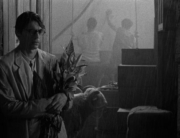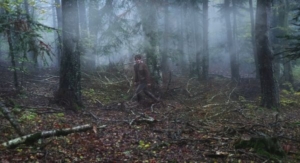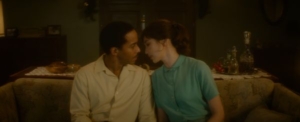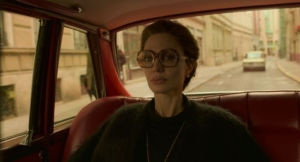![]() Gary Hustwit’s documentary is as unconventional as its subject, the renowned musician and producer Brian Eno. It was created with a proprietary generative software (developed by Hustwit and digital artist Brendan Dawes) called Brain One (an anagram of “Brian Eno”) that results in a unique version of the film at each screening. Therefore, each showing represents a singular experience, never to be repeated again. The beginning and ending contemporary interview scenes with Eno, as well as certain structural elements, are the same in each version, but most other scenes will differ.
Gary Hustwit’s documentary is as unconventional as its subject, the renowned musician and producer Brian Eno. It was created with a proprietary generative software (developed by Hustwit and digital artist Brendan Dawes) called Brain One (an anagram of “Brian Eno”) that results in a unique version of the film at each screening. Therefore, each showing represents a singular experience, never to be repeated again. The beginning and ending contemporary interview scenes with Eno, as well as certain structural elements, are the same in each version, but most other scenes will differ.
This very unusual way of presenting the film is directly inspired by Eno’s musical creative process, which he expounds on throughout. Eno compares this process to gardening, which there are scenes of Eno actually doing. After setting up some parameters, Eno plants what he calls a musical “seed”—a series of notes or passages—and then uses computer software to generate that initial element into a fuller composition. Eno attempts to work along the same lines by using hundreds of hours of archival material supplied by the composer, as well as contemporary interviews conducted mostly in his home studio, to generate a seemingly spontaneous and improvisational presentation that, again, will be different for every screening.
A major result of this filmmaking and film exhibiting process is that most of the standard hallmarks of music documentaries go out the window. There are no rhapsodic talking heads testifying to Eno’s greatness, there are very few details about his personal life, and there’s no linear career chronology. The film concentrates mostly on the artist’s philosophies and approaches to creating music, with the copious archival footage serving as concrete examples. For instance, scenes of Eno in the studio with David Bowie (recording his 1970’s “Berlin Trilogy”) and U2 (during sessions for their single “Pride (In the Name of Love)”), illustrate how his musical concepts work in his collaborations with other artists.
Eno represents a positive and inspiring example of how technology can enhance creativity and point the way toward the future evolution of cinema. Some of the actual software code used to create the documentary is visible between some scenes, which makes for some fascinating visual elements. Meanwhile, Eno proves to be a funny, engaging, and ebullient interview subject, the deeply human heart of a film that undoubtedly involved many computers in its creation. Eno, beyond all its technological bells and whistles, is in the end a finely made and illuminating portrait of a great, innovative musical artist.

















Leave A Comment